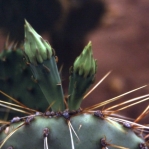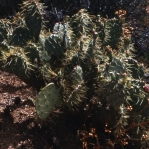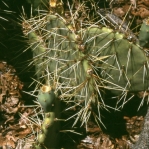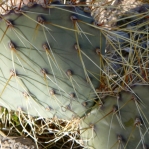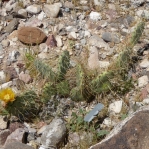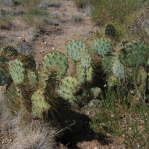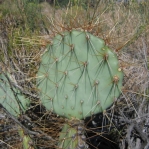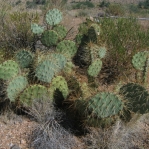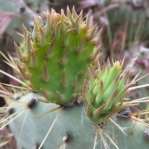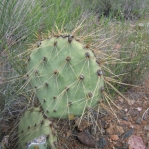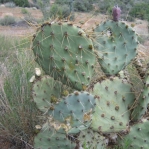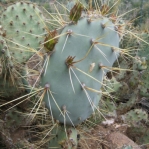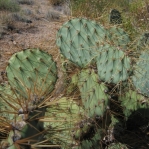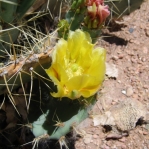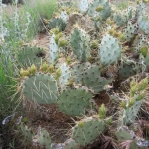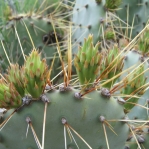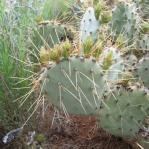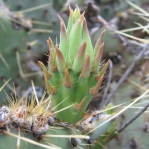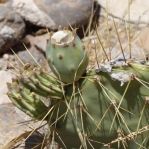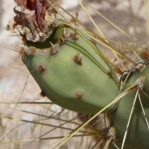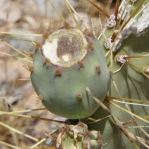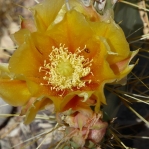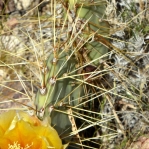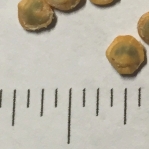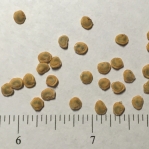
(L.D. Benson) B.D. Parfitt, Systematic Botany 5(4): 416, 1980 [1981]
Herbarium; Herbarium; Herbarium; Herbarium; Herbarium; Herbarium; Herbarium; Herbarium; Herbarium; Herbarium
It is proposed that O. martiniana is related to O. chlorotica chlorotica
O. curvospina is a related species
Original Description
What is Opuntia martiniana?
Opuntia martiniana is a prickly pear cactus found sporadically at the north end of the Hualapai Mountains near Kingman, Arizona. The apparent hybrid origins of this taxon are discussed in a paper by LC Majure.
Details
O. martiniana cladodes are often circular or subcircular with long spines arising from the areoles. Cladodes are 9-16 cm across. The spines are pale yellow at the tips, changing to yellow and yellow-brown, and sometimes finally brown at the base. Overall the spines may appear golden or yellowish-brown. Most areoles have spines; typically there are 1-2 strong ones that are semi-vertical to the pad surface. Two or three lesser spines may be present but without such a vertical presence.
Flowers are yellow and may have a style swollen at the midpoint. The pericarp is more slender than in O. curvospina, a similar plant. Areoles are few on the fruit. The ovary apex at anthesis is about 1.5 cm across.
O. martiniana is tetraploid.
Other Notes
Parfitt (1980) reported that O. martiniana is superficially similar to O. curvospina but is distinguished by its style shape and other characters. For instance, O. martiniana is a shorter plant at about 60-90 cm.
We have not examined the type specimen for this species, but Benson seems to have used the name for different plants. The proper use of the name hinges on what the type specimen really is. Benson seems to have been redescribing Opuntia gilvescens, and most of his published photos are of that species (some of the color photos are of other species, likely all O. phaeacantha). None of Benson’s photos are of the plant that Pinkava and Parfitt called Opuntia martiniana. It seems odd that Benson would misinterpret his own species, but it’s possible. It seems that the type specimen should match his photos and should be O. gilvescens.
Pinkava and Parfitt considered the type specimen to be the same as yellow-spined, semi-erect plants that are most like O. azurea or O. macrocentra. It is also similar to O. chisosensis. The yellow-spined plant is found in the mountains of the Kingman area in Arizona and is very distinctive. Earle may have called the plant O. superbospina, but that name doesn’t fit either, for that plant is purported to be low-growing with very long spines.
Dave Ferguson writes:

